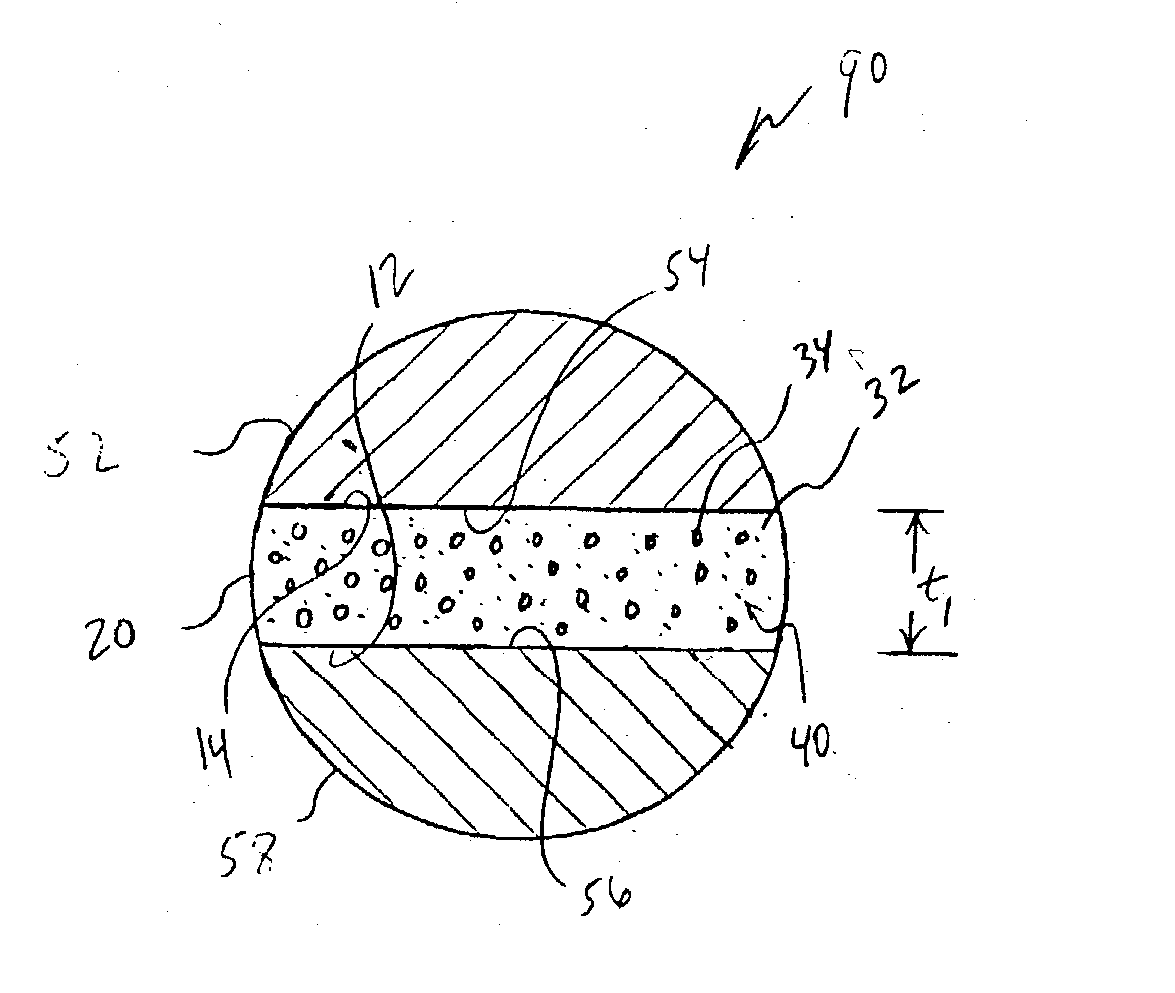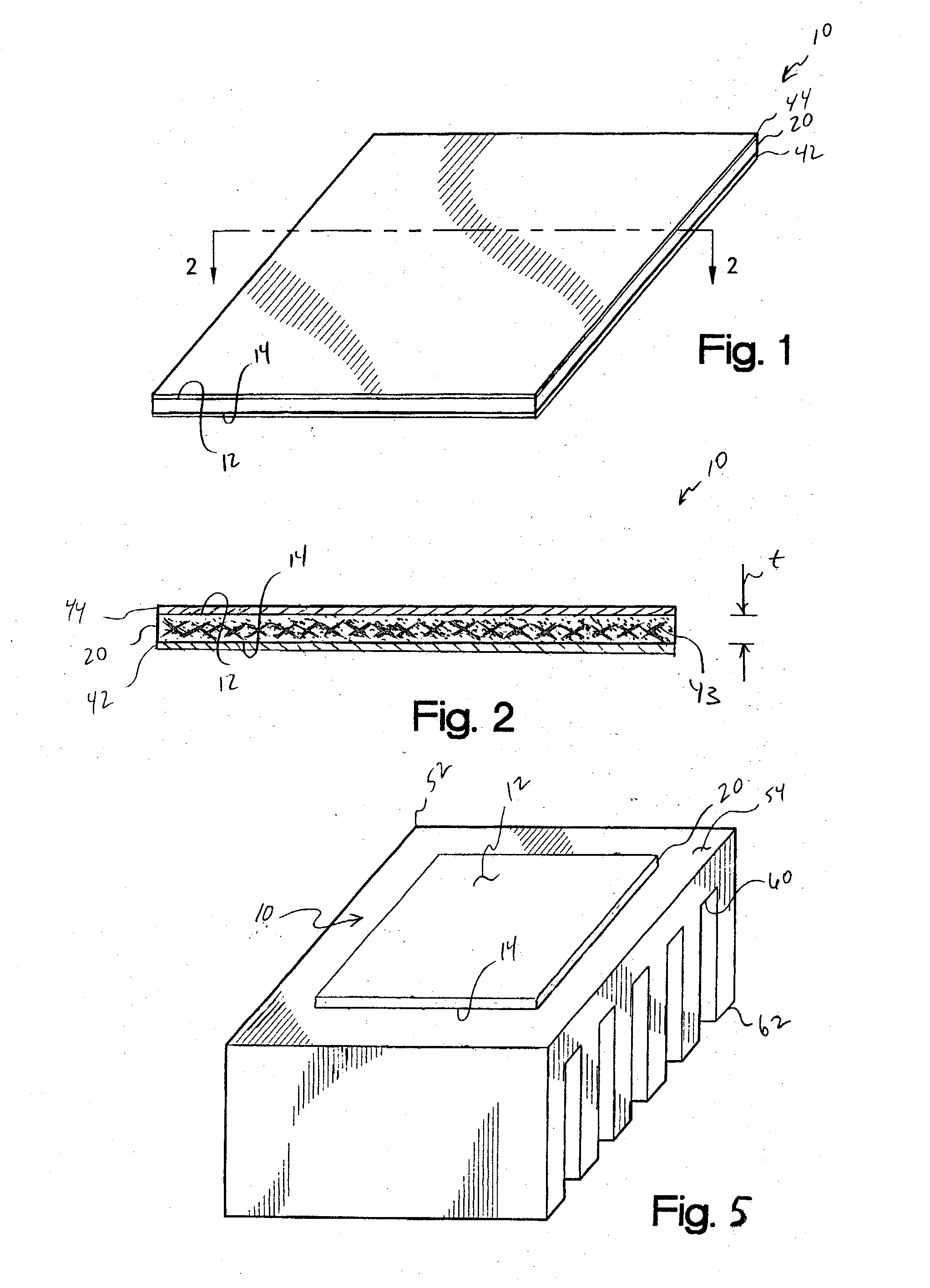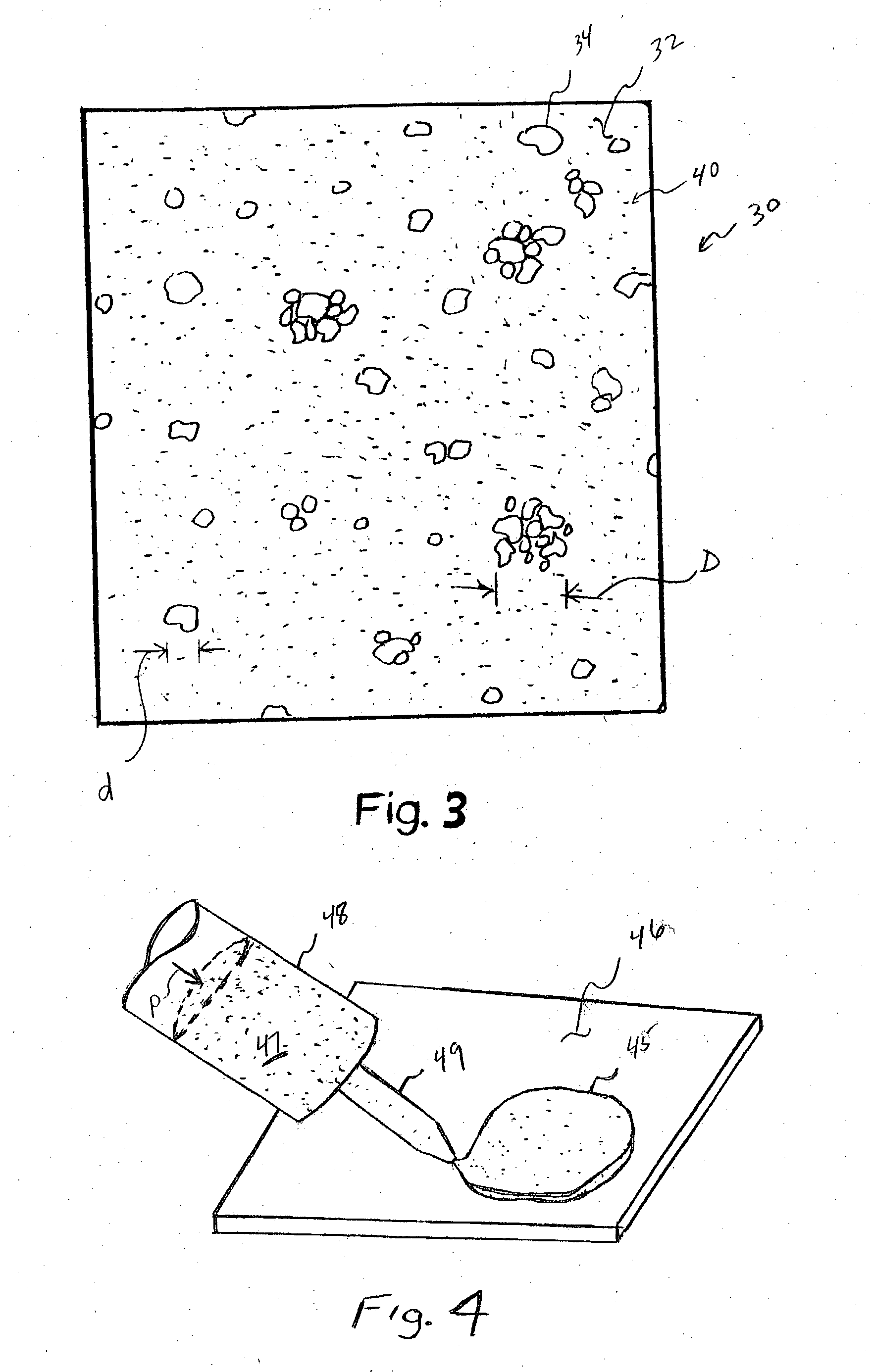Thermal management materials
- Summary
- Abstract
- Description
- Claims
- Application Information
AI Technical Summary
Benefits of technology
Problems solved by technology
Method used
Image
Examples
example 1
[0064] In representatives formulations of the thermally-conductive compound of the present invention were prepared by admixing a fusible metal ASTM Alloy 117 in a boron nitride (BN) and zinc oxide-filled, silicone-oil based thermal grease (DC 340.TM., Dow Corning Corp., Midland, Mich.) having a reported thermal conductivity of 2.0.times.10.sup.-3 cal / s-cm-.degree. C. Such 117 alloys are specified per ASTM B774 as eutectics having a melting point of 117.degree. F. (47.degree. C.) and comprising between 44.2-45.2% bismuth, 22.1-23.2% lead, 7.8-8.8% tin, 18.6-19.6% indium, and 4.8-5.8% cadmium. The specific low metal alloy ("LMA") used in this Example 1 was a 44.7% bismuth, 22.6% lead, 8.3% tin, 19.1% indium, and 5.3% cadmium powder (AIM47.TM., AIM, Montreal, Quebec, Canada) having a average particle size of about 0.04-40 mils (1-1000 .mu.m) This alloy was reported as having a an apparent thermal conductivity of about 20 W / m-K.
[0065] Samples of the thermal grease-alloy admixture were c...
example 2
[0068] The thermal performance of a 15% LMA-thermal grease compound formulated as described in connection with Example 1 was further characterized by measuring impedance as a function of pressure at 70.degree. C., 50.degree., and at 50.degree. C. following a burn-in at 65.degree. C. The measurements were obtained in accordance with ASTM 5470, and are plotted in FIG. 7 as "T851." The results for the neat DC 340.TM. grease at 70.degree. C. are also plotted in FIG. 7 as "T850." The result show an appreciable drop in impedance as a function of temperature. for the LMA-filled sample versus the neat grease.
PUM
| Property | Measurement | Unit |
|---|---|---|
| Fraction | aaaaa | aaaaa |
| Fraction | aaaaa | aaaaa |
| Fraction | aaaaa | aaaaa |
Abstract
Description
Claims
Application Information
 Login to View More
Login to View More - R&D
- Intellectual Property
- Life Sciences
- Materials
- Tech Scout
- Unparalleled Data Quality
- Higher Quality Content
- 60% Fewer Hallucinations
Browse by: Latest US Patents, China's latest patents, Technical Efficacy Thesaurus, Application Domain, Technology Topic, Popular Technical Reports.
© 2025 PatSnap. All rights reserved.Legal|Privacy policy|Modern Slavery Act Transparency Statement|Sitemap|About US| Contact US: help@patsnap.com



